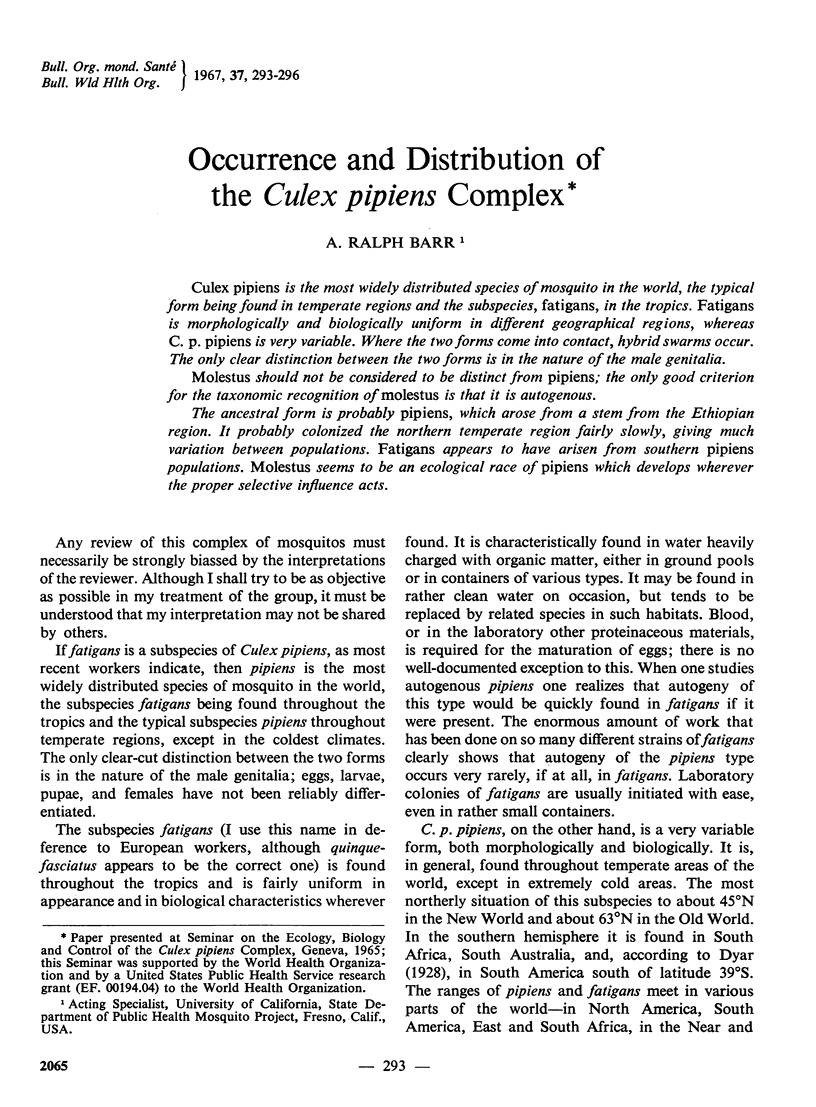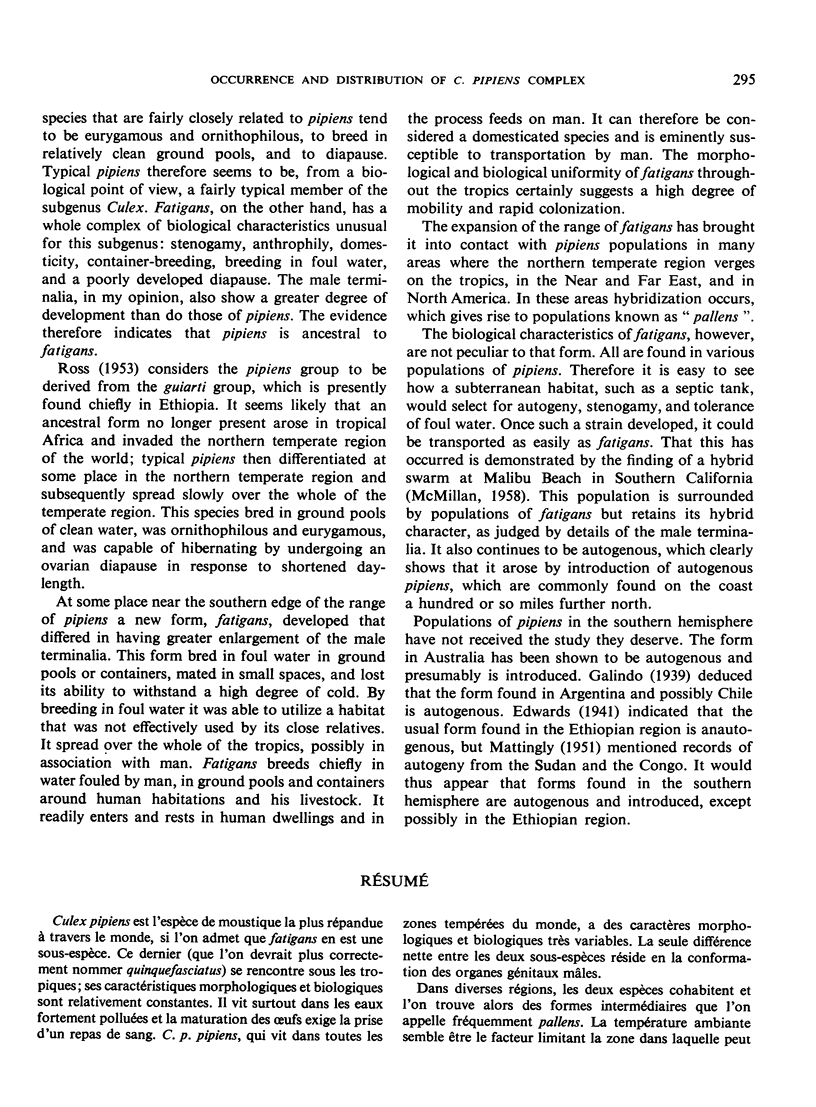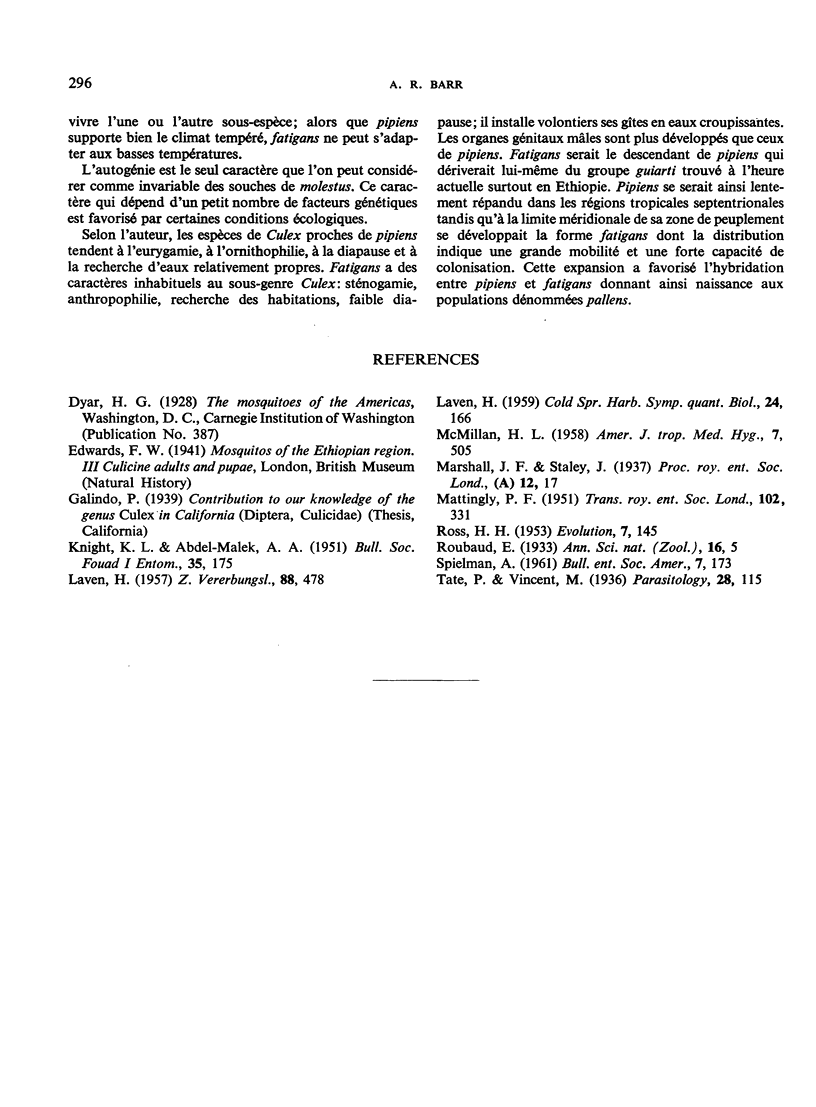Abstract
Culex pipiens is the most widely distributed species of mosquito in the world, the typical form being found in temperate regions and the subspecies, fatigans, in the tropics. Fatigans is morphologically and biologically uniform in different geographical regions, whereas C. p. pipiens is very variable. Where the two forms come into contact, hybrid swarms occur. The only clear distinction between the two forms is in the nature of the male genitalia.
Molestus should not be considered to be distinct from pipiens; the only good criterion for the taxonomic recognition of molestus is that it is autogenous.
The ancestral form is probably pipiens, which arose from a stem from the Ethiopian region. It probably colonized the northern temperate region fairly slowly, giving much variation between populations. Fatigans appears to have arisen from southern pipiens populations. Molestus seems to be an ecological race of pipiens which develops wherever the proper selective influence acts.
Full text
PDF



Selected References
These references are in PubMed. This may not be the complete list of references from this article.
- LAVEN H. Speciation by cytoplasmic isolation in the Culex pipiens-complex. Cold Spring Harb Symp Quant Biol. 1959;24:166–173. doi: 10.1101/sqb.1959.024.01.017. [DOI] [PubMed] [Google Scholar]
- McMILLAN H. L. Study of a naturally occurring population intermediate between Culex p. pipiens and C. p. quinquefasciatus. Am J Trop Med Hyg. 1958 Sep;7(5):505–511. doi: 10.4269/ajtmh.1958.7.505. [DOI] [PubMed] [Google Scholar]


